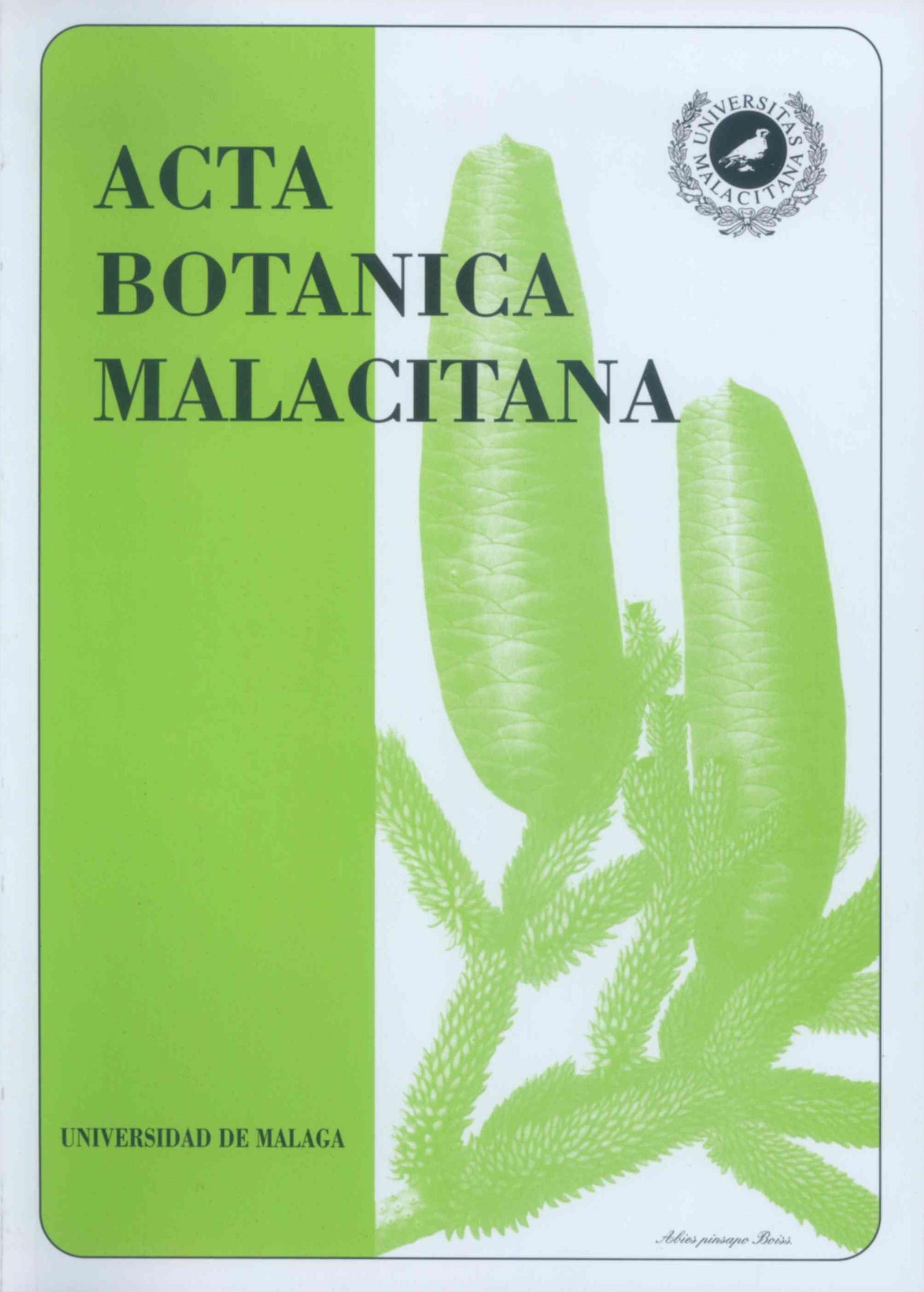Intrathalline variations of the lichenic substances with age in Lasallia pustulata (L.) Mérat
DOI:
https://doi.org/10.24310/abm.v16i.9156Keywords:
Lichens, lichen substances, intrathlline variationAbstract
The distribution of lichen substances within the tallus ofLusalliapustulam (L.) Me?rat, and the variation in concentration of these substances with thallus age was studied using high performance liquid chromatography. Lecanoric and gyrophoric acids were presents in greatest quantity per unit weigh at the thallus periphery and also in the youngest thalli studied.
Downloads
Metrics
References
CULBERSON, C.F. -1972- Improved conditions and new data for the identification of lichen products by a standardized thin-layer chromatographic method. J. Chromatogr. 92: I 13- 125.
CULBERSON, C.F. -1974- Conditions for the use of Merck silica gel 60 F254 plates in the standardized thin-layer chromatographic technique for lichen products.J. Chromatogr. 97: 107-108.
CULBERSON, C.F. & W.L. CULBERSON -1958- Age and chemical constituents of individuals of the lichen Lasallia papulosa. Lloidia 21(3): 189-192.
CULBERSON, C.F. & H. KRISTINSSON -1970- A standardized method for the identification of lichen products. J. Chrotnatogr. 46: 85-93.
FAHSELT, D. -1984- Interthalline variability in levels of lichen products within stands of Cladina stellaris. Bryolo gist 87 (1): 50-56.
GEYER, M. -1985- Hochdruck-Flassigkeits-Chromatographie (HPLC) von Flechten- Sekunddrstoffen. 233 pp. Diss. Univ. Essen. Essen.
LO?PEZ REDONDO, F. -1985- Aportaciones al conocimiento fitoqui?mico de Pseudevernia futturacea (L.) Zopf en Espan?a. Universidad Complutense de Madrid. Memoria de Licenciatura ine?dita.
Downloads
Published
How to Cite
Issue
Section
License
Those authors who publish in this journal accept the following terms:
a. The authors will retain their copyrights and guarantee the journal the right of first publication of their work, which will be simultaneously subject to the Creative Commons Attribution-Non-commercial 4.0 license whose full text can be found at <http: // creative commons .org / licenses / by-nc / 4.0> that allows third parties to share the work as long as its author and its first publication are indicated, and as long as it is not for commercial purposes.
b. Authors may adopt other non-exclusive licensing agreements for the distribution of the version of the published paper (e.g., deposit it in an institutional telematic file or publish it in a monographic volume) provided that the initial publication in this journal be indicated.
c. Authors are allowed and recommended to disseminate their work through the Internet (e.g., in institutional telematic archives or on their websites) before and during the submission process, which can produce interesting exchanges and increase citations of the published work. (See The effect of open access)







1.png)
